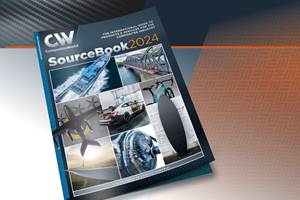Startup struggles
A week before Adam Aircraft made the somewhat surprising announcement that it had run out of cash and couldn’t find anyone to lend it money, I found myself on the phone with one of the company’s composites design engineers. We were discussing trends in composites design for aerospace, aerospace design challenges, and
A week before Adam Aircraft made the somewhat surprising announcement that it had run out of cash and couldn’t find anyone to lend it money, I found myself on the phone with one of the company’s composites design engineers. We were discussing trends in composites design for aerospace, aerospace design challenges, and the future of composites use in aviation structures. Just a couple weeks before this discussion, Adam Aircraft had announced layoffs at its facilities in Colorado and Utah, citing cash-flow problems, so as I spoke with the designer, I knew that the company was struggling to make ends meet. At one point, he commented that there were unique challenges involved in securing Federal Aviation Admin. (FAA) certifcation for composites-intensive aircraft like Adam’s, because they are, materially, such a departure from traditional aircraft construction. He noted that the FAA was being much more careful and, by extension, taking much longer to assess, inspect and certify Adam’s A700 jet. Wondering if this observation was grounded in frustration, given Adam’s cash shortfall, I asked him if the company didn’t, in some way, blame the FAA for the fact that Adam hadn’t yet got its craft to market. “No,” he said. “The FAA has to be careful — and it should be careful. We just happen to be one of the first to go through this process, and it’s going to take a while.”
In hindsight, there was a sad forboding in these comments — it seems like a company that so aggressively pursued composites use in aircraft almost deserves a better chance to see the product come to market. Alas, at press time, Adam’s employees were being pursued by the likes of Bombardier and Embraer, the company had filed for Chapter 7 bankruptcy, and trustee Jeffrey Weinman had begun the process of liquidating Adam’s assets, valued at $50 million to $100 million. Still, there is a glimmer of hope for the Adam product. Weinman told The Denver Post that there “is an enormous amount of interest among many people who would actually like to continue the business.”
Adam’s struggles, whatever the outcome, make clear that despite the benefits composites can provide the aerospace industry, the migration away from metals brings pervasive changes to an aircraft that impact it throughout its lifecycle. Just as a designer who’s used to working with metals can’t apply the same discipline to composites, a certifying authority accustomed to signing off on aluminum structures must reconsider its approach when it comes to assessing a composites-intensive structure. While it’s not fair to say that the FAA shoulders the blame for the company’s demise, its equally unfair that that a trailblazer like Adam Aircraft should suffer for being one of the first out of the gate with planes that so heavily employ composites.
The truest test of aircraft composites and the FAA’s willingness to certify their use will come this summer as Boeing’s 787 is put through its paces. While we’re confident that the Dreamliner will pass muster, it will be a precedent-setting process that heralds a significant milestone in aviation design and construction. Adam Aircraft should be sharing the stage, taking a well-deserved bow. We’ll continue to hope that the Adam A500 and A700 are resurrected and brought to fruition.
Related Content
The return of trade show season
SAMPE Seattle, JEC World and the Paris Air Show are approaching fast, and they signal the real emergence of a post-pandemic world.
Read MoreHow composites have become a necessity
Composites used to be one of many material options across industries and applications, but that's not the case anymore.
Read MoreCompositesWorld SourceBook 2024
Welcome to CW’s annual SourceBook, your guide to suppliers of machinery, materials, software and other services for the composites industry.
Read MoreCAMX 2022: 10 reasons to attend
Looking for a good reason to attend CAMX 2022? Look no further.
Read MoreRead Next
Composites end markets: Energy (2024)
Composites are used widely in oil/gas, wind and other renewable energy applications. Despite market challenges, growth potential and innovation for composites continue.
Read MoreFrom the CW Archives: The tale of the thermoplastic cryotank
In 2006, guest columnist Bob Hartunian related the story of his efforts two decades prior, while at McDonnell Douglas, to develop a thermoplastic composite crytank for hydrogen storage. He learned a lot of lessons.
Read MoreCW’s 2024 Top Shops survey offers new approach to benchmarking
Respondents that complete the survey by April 30, 2024, have the chance to be recognized as an honoree.
Read More























